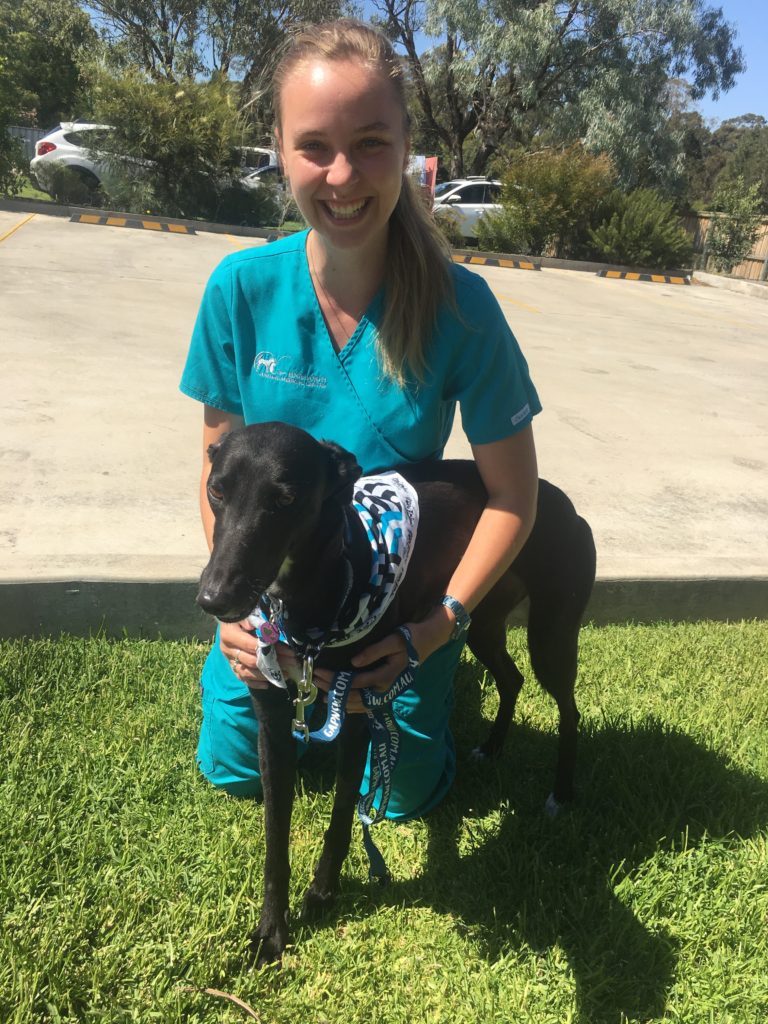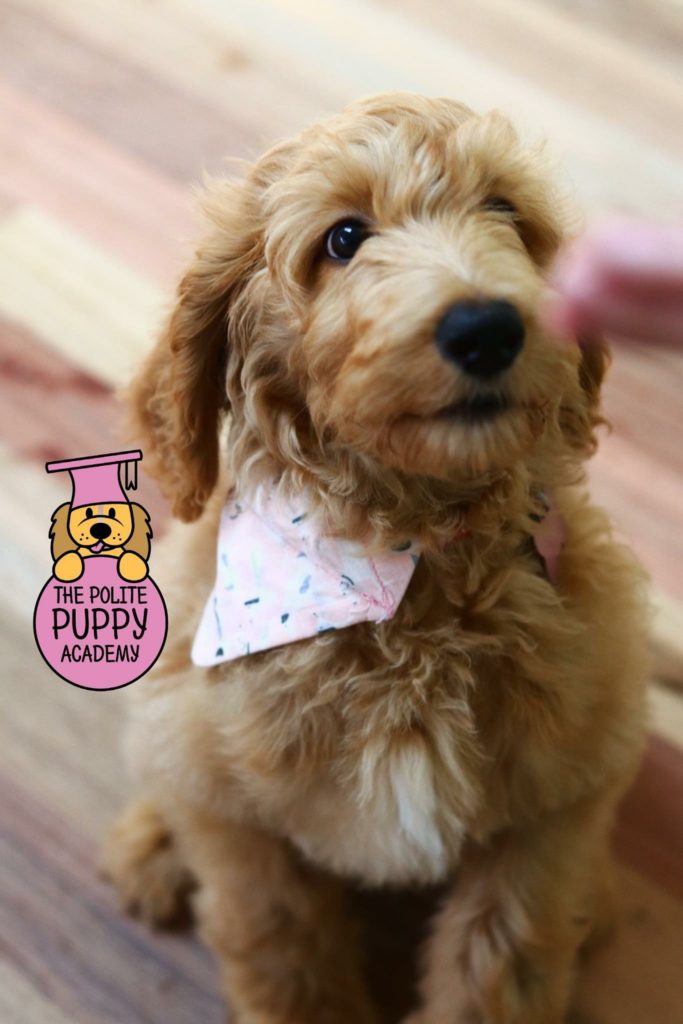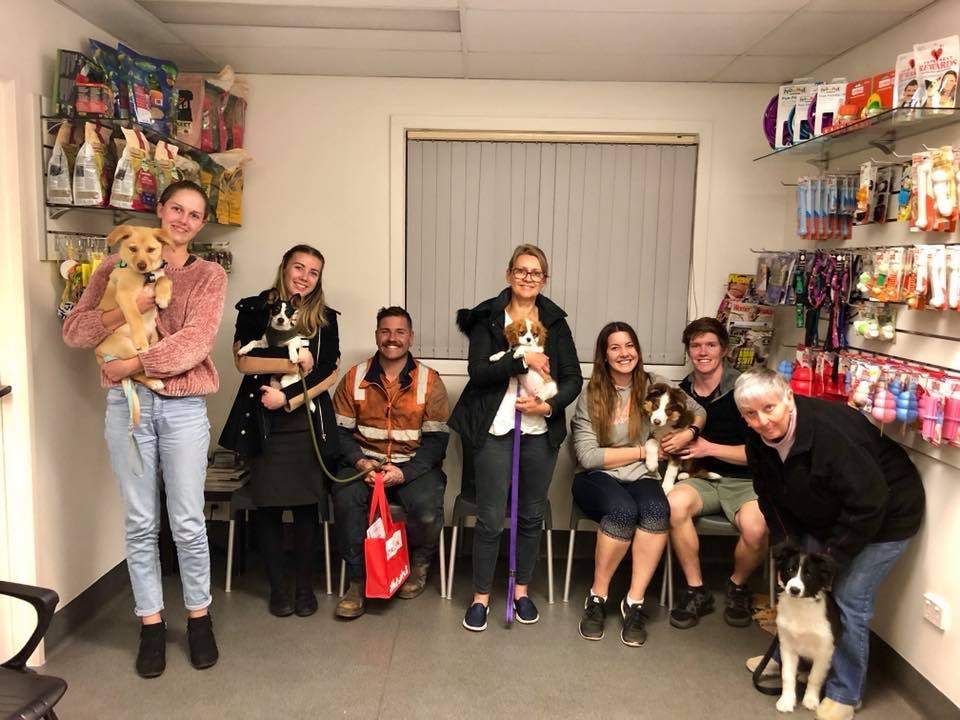Puppy Proofing
Are you ready?
When you think of puppies we all think of these cute little fluffers, that play and sleep and bring us so much joy, and they do! They can also bring a whole lot of destruction and stress if you are not prepared!
Firstly, if you have not already brought your puppy home and you are still deciding what to get, then there are a few things to consider. Do your research and make sure you find the right dog to fit your lifestyle.
Energy levels and Exercise
All dogs need some kind of exercise and mental stimulation; however, some breeds have higher demands than others. It is important to match a dog’s energy levels with your own. How much time do you have to meet the exercise requirements for the breed you are considering? Buying a highly strung, energetic dog like a Border Collie when you work full-time and don’t have time to run it everyday (sometimes twice a day) is not going to be a good match. Investigate what the breed has been bred for and plan how you are going to meet its needs both physically and emotionally.
Taking your dog out for a walk early in the morning so they can burn some energy before they are left for the day can be helpful. Getting out also helps to stimulate their brain with new sights and smells. You will need to teach your pup to walk with good manners for this to be an enjoyable experience. Various halter-style leads or front attachment/attaching harnesses can really help if your dog likes to pull.
Leash free parks and beaches are great fun for confident, well socialised and confident dogs but some pets can be intimidated in these situations. Be mindful and ensure your dog is well mannered and can will come back when called if required.
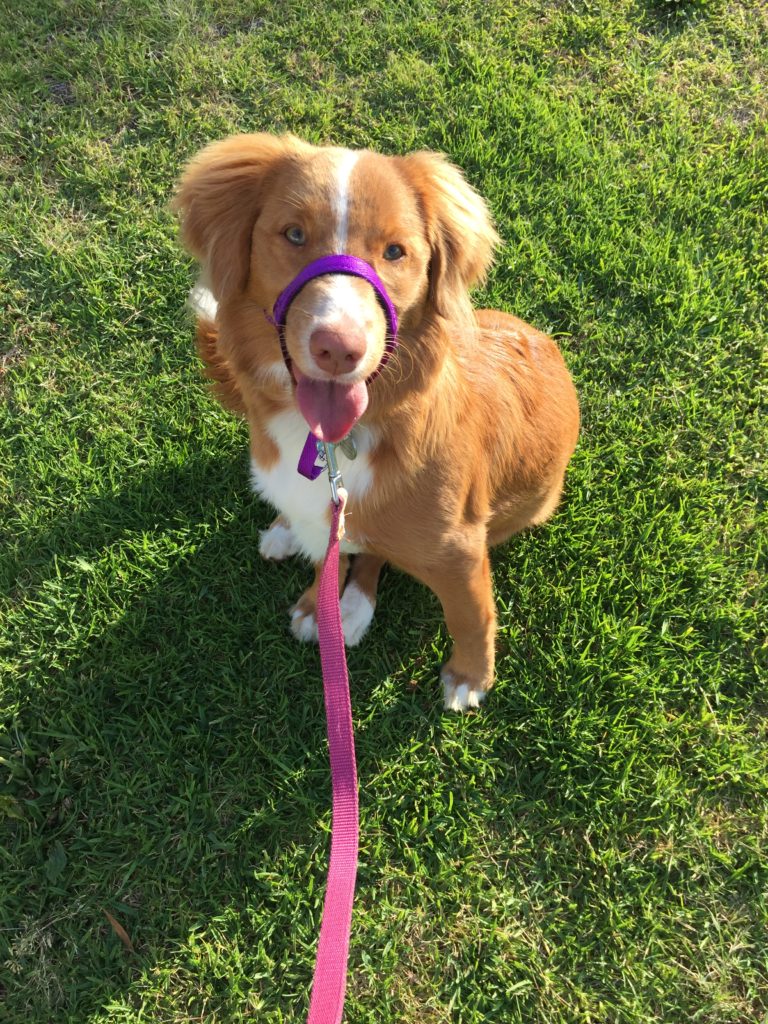
Mavis wearing her Halti for a walk 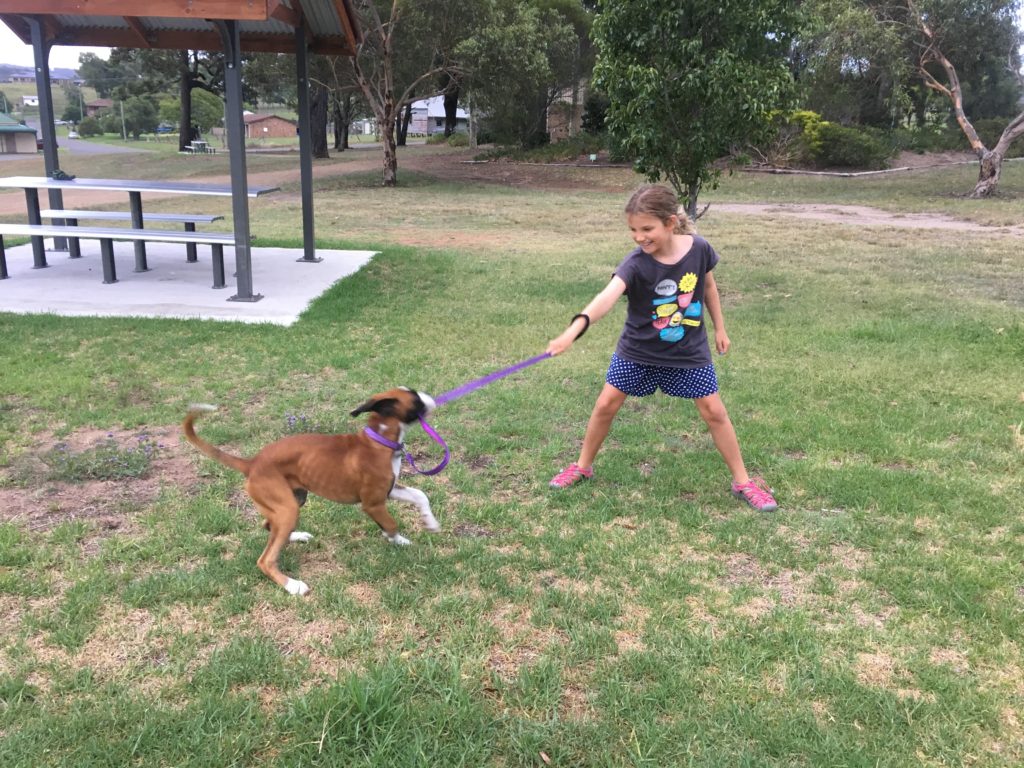
leash training is required for well mannered walks 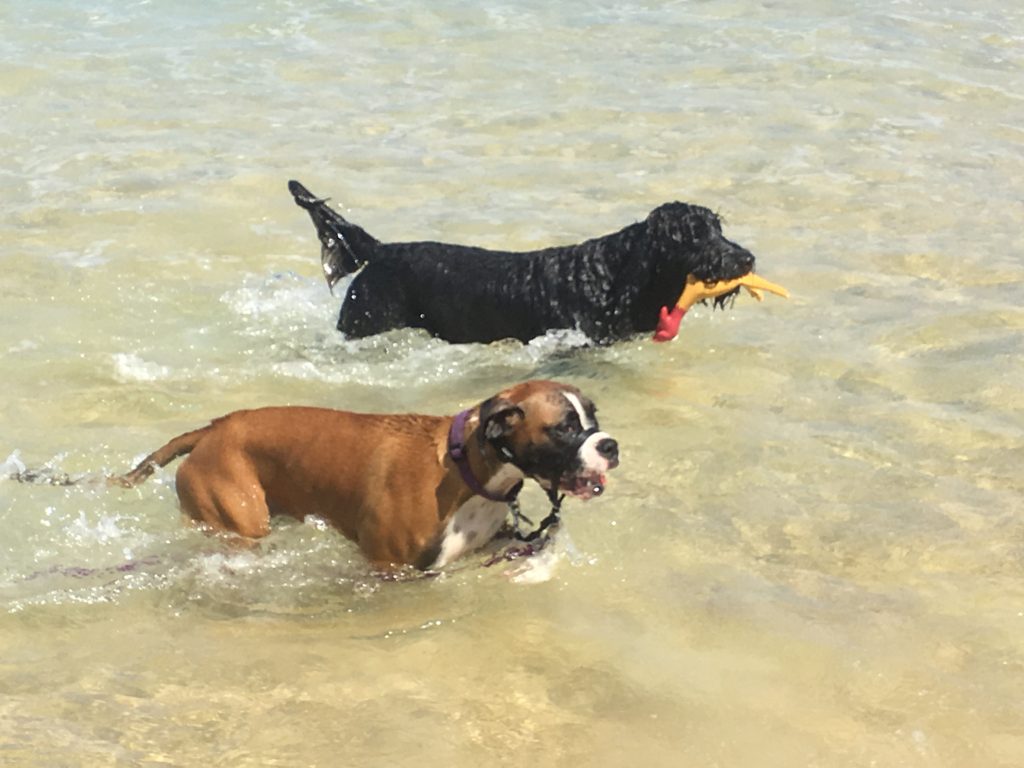
off leash play at the beach is great fun for some dogs
Inside or Outside
Do you want an indoor dog or an outdoor only dog? A delicate little, fine-coated Italian greyhound will need to be kept warm with coats and be kept indoors in winter. While a thick coated Labrador is suited to being outside. Consider the dog’s coat and shedding also if you want an indoor dog; owners are often surprised at how much hair their short coated dog sheds. Poodle cross breeds are popular for their reduced shedding but will need quite a bit of upkeep in grooming.
Most families will at least start off with their puppies inside so toilet training is going to be required. Just like a toddler, puppies will have accidents in the house no matter how good you are but following some basic principles will set your puppy up for success.
- if you ultimately want your puppy to toilet outside on the grass then this is where they should go from the start. Some people like to use puppy pads but this can be confusing for them when you tell them it is ok to toilet on these in the house but later expect them to go outside. Take your puppy to the outside location where you want him to eliminate and when he does the right thing reward with praise and treats.
- Never leave a puppy to free range in the house until consistently toilet trained. They should be kept confined to a small space unless under direct supervision. As soon as sniffing or circling is seen then they should be taken outside immediately.
- Crate training is a fantastic tool for toilet training as well as getting your puppy used to being in a small space where they feel safe and secure for other behavioural training. Sturdy wire crates that fold down for easy storage when not in use or for travelling with are a fantastic investment and can often be purchased online relatively cheaply. You need one big enough for your dog to sleep on its bed and a food and water bowl. Train your puppy to eat and sleep in here.
- They should never be locked up as a punishment but rather learn that is their quiet and safe place. This smaller confinement area provides safety for the puppy and protects your home from damage while you teach it what it can chew and where to eliminate.
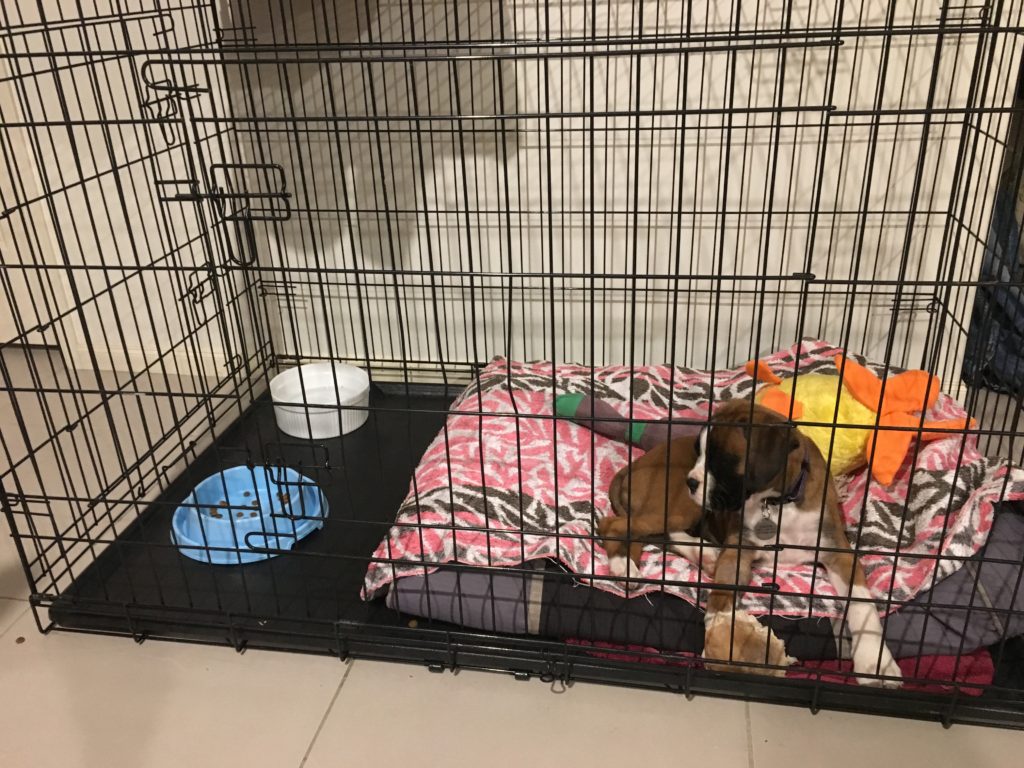
Puppy Crate Training Steps:
1. Introduce your puppy to the crate (indoor pen) as soon as it is brought home and as early in the day as possible. Place a variety of treats in the crate throughout the day so that your puppy is encouraged to enter voluntarily. Food, water, toy and bedding could also be offered to your puppy in the open pen.
2. Choose a location outdoors for your puppy to eliminate. Take your puppy to the location, wait until he eliminates, and reward him lavishly with praise or food. After some additional play and exercise, place your puppy in his crate with water, a toy and a treat. If your puppy is relaxed in the crate then you may close the door.
3. If your puppy is tired and calm, it may take a ‘nap’ shortly after being placed in its crate.
4. Leave the room, but remain close enough to hear your puppy. Escape behaviour and vocalisation are to be expected when your dog is first placed into his crate. If the ‘complaints’ are short or mild, ignore your dog until the crying stops. If your puppy is showing panic when the door of the crate is closed you need to spend more time on 1 (above). Never release your puppy unless it is quiet. This teaches that quiet behaviour rather than crying will be rewarded. Release your puppy after just a few minutes of a quiet or short nap.
5. Repeat the crate and release procedure. Each time, increase the time that your puppy must stay in the crate before letting out. Always give your puppy exercise and a chance to eliminate before shutting him in the crate.
6. If your puppy sleeps in one end of his crate and eliminates in the other, a divider can be installed to keep the puppy in a smaller area.
7. Never leave your puppy in his crate for longer than it can control itself or he may be forced to eliminate in the crate.
8. If your puppy must be left for long periods during which he might eliminate, he should be confined to a larger area such as a dog-proof room, with paper left down for elimination. The crate (with the door hooked open) can also be left in the room as your puppy’s bed. As your puppy gets older, his control will increase and he can be left longer in his crate.
9. Although there is a great deal of individual variability, many puppies can control themselves through the night by 3 months of age. During the daytime, once your puppy has relieved itself, a 2 month old puppy may have up to 3 hours control, a 3 month puppy up to 4 hours and a 4 month old puppy up to 5 hours.
10. A crate is not an excuse to ignore your dog!
11. Dog Appeasing Pheromone is naturally produced by the bitch after whelping and helps to reassure the puppies around the nest area. An artificially synthesised version of this (DAP or Adaptil) is now available from EAMC. Used in the home it helps the new puppy to settle more quickly a she area feels familiar and plugging a diffuser in close to the crate may be a valuable tool to assist the pup in feeling safe in the crate and thus assist in crate training.
Children
Puppies take a lot of training and initially will jump and bite with their super sharp nails and teeth. This can make kids fearful of going out into the yard if they are not taught how to handle these situations and be old enough to cope. Wearing thick long pants like jeans and enclosed shoes can help reduce the kids reactions when puppies jump up on them. Children need to be taught how to interact with puppies and to stand still rather than run and squeal which the puppy will see as a fun game of chase. If they stand still like tree with arms folded the puppy will quickly loose interest. When the puppy calms and places all feet on the ground or sits, then they can be given a treat or a pat as reward and they will quickly learn appropriate behaviour. We want to reward the good and ignore the bad. Children and dogs should always be supervised when interacting to ensure safety, it is important for adults and children to know how to read a dogs body language to avoid bites.
Puppies take a lot of training and initially will jump and bite with their super sharp nails and teeth. This can make kids fearful of going out into the yard if they are not taught how to handle these situations.
Wearing thick long pants like jeans and enclosed shoes can help reduce the kid’s reactions when puppies jump up on them. Children need to be taught how to interact with puppies and to stand still rather than run and squeal which the puppy will see as a fun game of chase. If they stand still like tree with arms folded the puppy will quickly lose interest. When the puppy calms and places all feet on the ground or sits, then they can be given a treat or a pat as reward and they will quickly learn appropriate behaviour. We want to reward the good and ignore the bad. Children and dogs should always be supervised when interacting to ensure safety, it is important for adults and children to know how to read a dog’s body language to avoid bites.
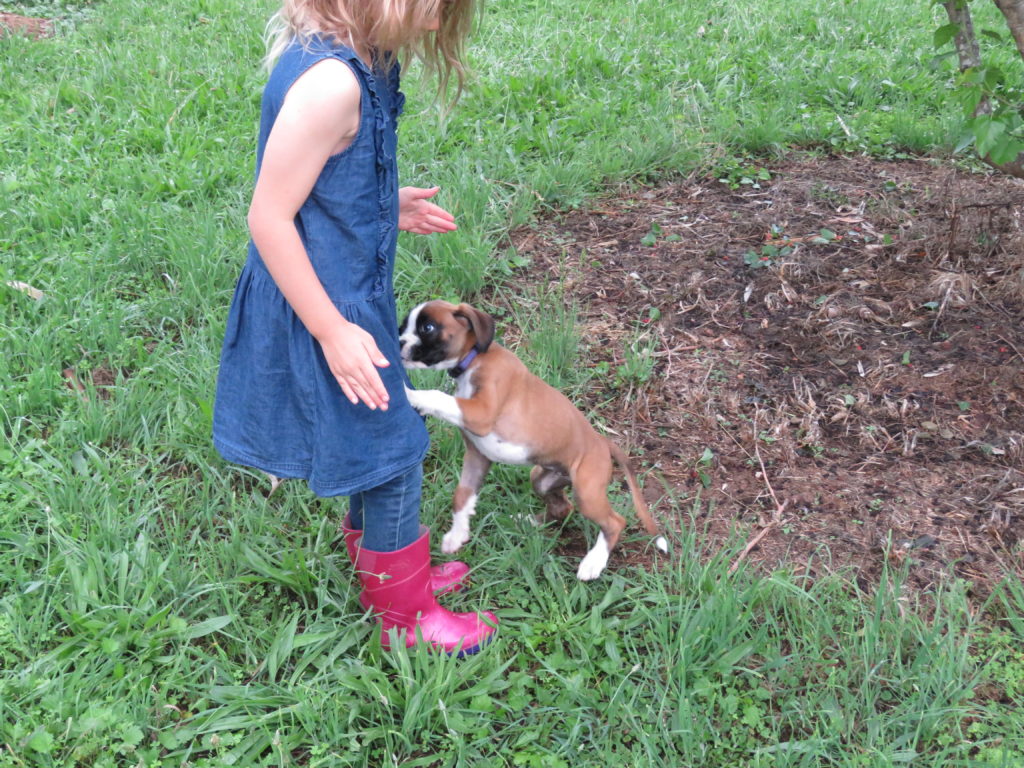
Securing your Yard
It is best to do a thorough audit of your yard before bringing a puppy home. Are your fences secure? Remember puppies are small and may fit through gaps an adult dog may not. You may need to make some modifications to ensure your yard is safe.
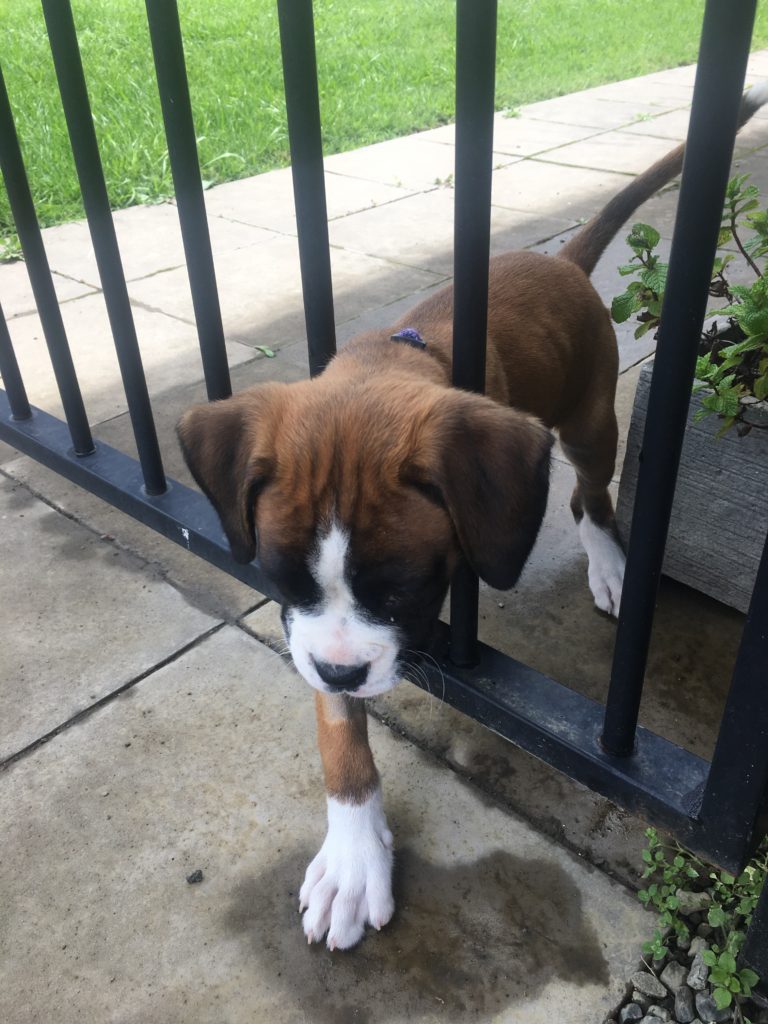
escape 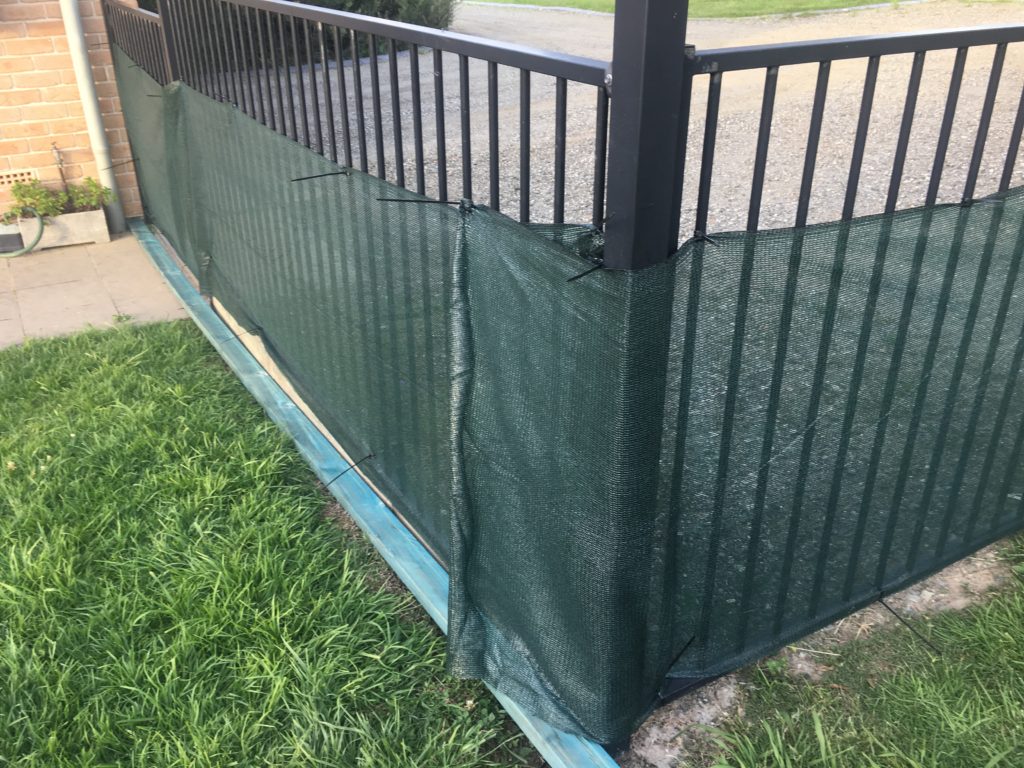
temporary screen to stop getting through the fence
Some dogs like to dig, you may need to lay down mesh along fence lines to prevent digging out. Other dogs are incredible jumpers or climbers and will scale fences.
You will learn pretty fast not to leave shoes out. Also, make sure you do not leave toys within reach that are not strong enough to withstand some heavy chew play. Beds are often chewed up as well, so avoid cheap soft fluffy beds that will just become ingested. A sturdy raised bed off the ground is best or a good strong canvas covered pillow style bed.
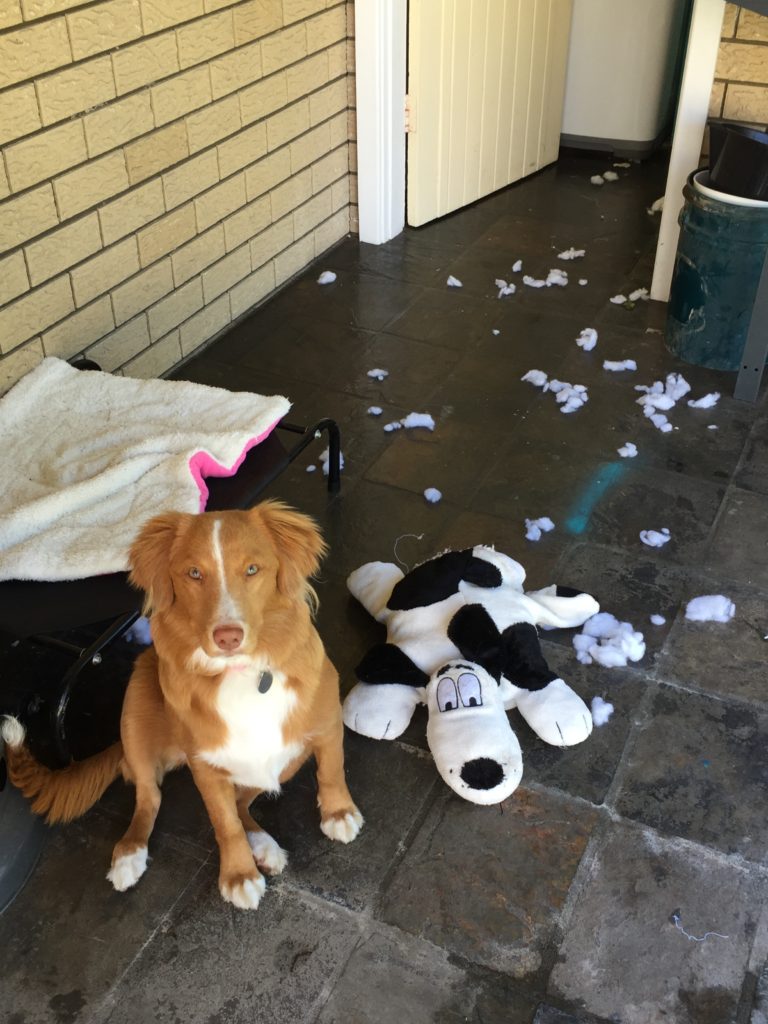
Toys, beds, clothes, shoes – all free game! 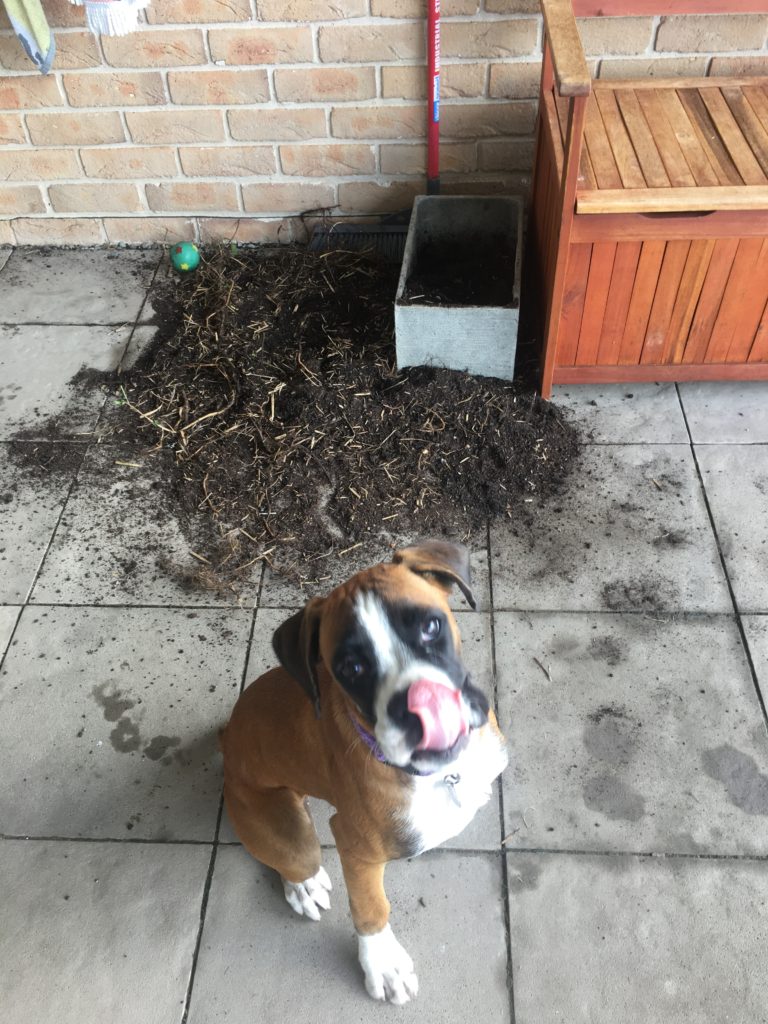
gardens, lawns and pots – dogs love to dig
Where to get a puppy?
Fortunately there are less puppies sold through pet shops nowadays, as most of these were supplied by large puppy farms with less than ideal welfare for the dogs involved.
Registered pedigree pups doesn’t always mean better. Dogs bred to a show standard are not necessarily any better as a family pet than one without a champion show pedigree. Breed standards have not always had the best interest of the animals in mind; as seen with the brachycephalic (squashed face) breeds like Pugs and Bulldogs.
Wherever you choose to get your puppy it should be a minimum of 8 weeks of age, be microchipped and have had its first vaccination. They should be weaned and eating solid food. The breeder should provide a vaccination certificate and arrange change of ownership for the pet registry.
Puppy Pre-school
Puppy preschool is a great opportunity for early socialisation during a critically impressionable period from 8-16 weeks of age. We want dogs to have lots of positive experiences during this time and happy associations with their vet clinic will make future visits as stress free as possible.
Pre-school is not just for the pups but it also helps remind new owners the basics of training and caring for a new pup.
The Polite Puppy Academy at Edgeworth Animal Medical Centre is run by qualified vet nurses who have additional training in puppy preschool, training and behaviour.
Health Care
Vaccinations – Puppies are vaccinated for Distemper, Hepatitis and parvovirus (C3) every 4 weeks from 6-8 weeks of age until their final puppy booster is at or over 14 weeks of age. This means most puppies require a series of 3 vaccinations. They are then given a booster 12 months later (around 15 months old), then every 3 years thereafter.
At the 2nd or 3rd visit we will add a Canine Cough (also called Kennel Cough or Infectious Laryngotracheitis) vaccination which only needs to be given once and is then boosted annually.
Together these vaccines are a complete C5 vaccination which is required for boarding kennels. Remember that puppies are not fully protected until 2 weeks after their final puppy booster and are still at risk of picking up these infectious diseases until after this time.
Intestinal worms – Puppies are more susceptible to heavy burdens of worms (whipworm, hookworm, roundworm, tapeworm) compared to adults so they need more frequent treatment. They should be given an appropriate dose of a complete worming treatment at 2 weekly intervals until 3 months of age, then monthly until 6 months of age and then every 3 months for the rest of their adult life.
Heartworm prevention – Heartworms are spread through the bite of an infected mosquito. The disease is not clinically apparent until it is at an advanced stage which may include heart failure. Not all dogs treated for Heartworm disease will survive their therapy. Prevention of this disease is much easier than cure, and can be in the form of a monthly treatment, or via a longer acting injection. At EAMC we recommend the Proheart Injection as the more reliable preventative option. In adult dogs, this injection is given just once a year, usually at their regular health check appointment. However, due to the fact that puppies are growing, they will get 2 doses in their first year to ensure they are adequately covered.
Fleas and ticks – every dog should be on regular flea and tick prevention. There are lots of products on the market now, your vet will advise which one will suit best.
Desexing – both males and females will benefit from desexing to reduce a range of health problems and behavioural issues. As a general rule we desex dogs at 6 months of age but your vet will advise if this needs to be different for your puppy.
Puppy vs Adult Dog
If you are reading this and thinking, “Oh dear, I don’t think I can handle a puppy but I would still like a dog. . . “ consider adopting an adult dog. Not all adult dogs up for adoption are ‘problem’ dogs. Many have just had to be rehomed due to changing circumstances and are perfectly sweet. There are many rescue groups (eg RSPCA or Greyhounds As Pets) and most will help you find the right fit for your family, and will offer you a trial period. With an older dog you will have a better idea of what you are getting. Puppies are an unknown, you may have a pup that grows up to have all kinds of anxieties and problems despite your best efforts. Adopting an older dog allows you to assess its temperament and suitability for your home and existing pets before making a long term commitment.
